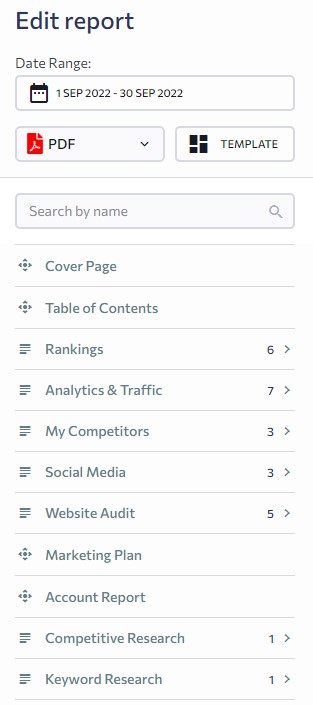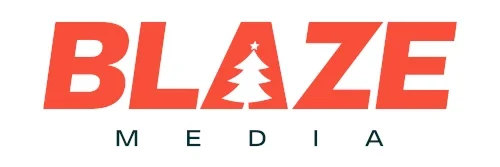If you are performing SEO work for a client or your employer, then you’re going to need to demonstrate exactly how your work is performing and what results you are achieving. The most common way of doing this is with a report.
In marketing, we love reports. It seems like we have a report for everything that we do! This is with good reason. Reports keep you accountable and make sure that you are staying on track to achieve your goals.
Most SEO tools out there include a report builder feature. And if they don’t, you should be able to export your data into a .csv file and then create a DIY report. But what data and metrics should you include? There’s so much data out there!
A killer SEO (search engine optimisation) report will help you show exactly what results you have achieved over a period with the most concise level of information possible. SEO can be confusing, so it’s best not to bombard your report with high-level information if your client/employer only has a certain level of understanding.
Carry on reading to find out more about how we do our own SEO reports here at Blaze Media and what you should include in your own.
How often should you create SEO reports?
The best schedule to deliver SEO reports is monthly.
We all know that SEO’s a long game. As such, a report once a month is enough to keep updated with how campaigns are going and track performance over time.
If you begin to get into performing weekly reports, not only will this take up a lot of your time in the week, it will be more volatile than showing a single monthly report would.
Maybe there were a couple of days when Google dropped your page out of the SERPs before it bounced right back (a very common occurrence with our friend Google). This might look more severe when presented on a weekly report, whereas you will be able to see it was only a slight blip on a monthly report.

What should an SEO report contain?
There are some elements that all SEO reports should contain. This includes things like tasks completed, keyword ranking performance, and traffic sources. However, because no two businesses are the same, some reports will have more custom features.
For example, in our post on tracking SEO performance, we discuss how you need to know your KPIs (key performance indicators) before you make the best progress with your SEO. One of your KPIs may be to increase your organic performance in a certain geographic location, so you can include more in-depth data on this when you deliver your reports.
Here is some information on elements that are frequently included in SEO reports.
Keyword report
Keywords are crucial to your SEO performance. You need to target specific keywords so that you can show up in the SERPs (search engine results pages) for relevant search terms.
However, not all keywords are the same. It may be worth your while to separate your keywords into different sections if they reflect different areas of your business, such as with informational and transactional keywords.
Informational
Informational keywords are terms that you will use in your blog posts, for example. These will be very top-of-funnel, long-tail terms with the aim of just getting visitors through to your website as opposed to specifically making purchases.
Despite not being high-converting keywords, they are still very important to your business. They will bring top-of-funnel traffic to your site, and will also help show Google that you are a topical authority in your niche or your industry. This will help your site’s broader SEO performance, too.
Transactional
Transactional keywords are specific keywords that will be used on your product or category pages. These will be bottom-of-funnel keywords, and will likely be higher-converting keywords.
It is important that your site is optimised for transactional keywords if you have an ecommerce site. For example, let’s say you have a fashion business and you sell suits and shoes. You will want your category pages optimised with the correct transactional keywords so that your category pages appear on the SERPs for relevant searches.
For some brands, their transactional keywords may even be specific names of their products or their brand. For many smaller businesses, though, this will not be the case.
Traffic report
Traffic reports are important parts of SEO and other digital marketing reports. Knowing how the visitors to your site got there is imperative if you want:
- To know if your campaigns are working
- To make informed strategic decisions in the future
This may include information such as users, traffic sources, location, etc. You can even combine your SEO and PPC results into one traffic report, if that’s relevant to you. Then you will be able to see how many visitors your site has from organic vs ads.
Two important features of your traffic report should be your search visibility and your best-performing pages.

Search visibility
Search visibility is how many times your website is clicked for terms that it ranks for, and it is measured as a percentage.
So, for example, let’s say that your website ranks for ‘red tea pots’. 100 people search for ‘red tea pots’, and out of all of those people, 10 of them click on your site. This means that your search visibility for ‘red tea pots’ is 10%.
A higher combined search visibility percentage is best. So, by including it in your reports, you can track whether your percentage is increasing or decreasing, and make any changes to your strategy if necessary.
Best performing pages
You will want to know what your best-performing pages are. There are two reasons for this:
- If you have a strategy that is focussed on certain pages, then you will want to know whether your strategy is working by driving traffic through those pages
- If one page on your site is performing much better than others, then are there any lessons that you can take from this and implement changes across other pages on your site?
- Can you use CRO (conversion rate optimisation) to really squeeze as much performance out of your best-performing pages that get the most traffic?
Backlink report
If your work includes off-page SEO, then you will need to include a backlink report. Depending on what link-building techniques you are using, you may want to present this information differently.
Procured links
If you are acquiring links manually, then include how many links you have sourced in this period.
This should include what domain is linking to yours, what pages of yours are being linked to, the anchor text, and any potential cost.
Keeping track of what referring domains you have acquired is useful because you can then make sure that you aren’t receiving too many links from one specific domain or a type of domain with a domain authority score within a certain range.
Link profile
You should also keep an up-to-date account of your backlink profile. How many referring domains do you have and what are their authorities?
While domain authority is a contentious metric, it is still good for presenting a very shallow overview of how Google will see your referring domains.
You can present your link profile in many ways. Some people prefer a table that shows all the necessary information, whereas others prefer a colourful pie chart or something more visual. Find what your client/employer prefers and use that!
How should your SEO report be presented?
If your SEO tool of choice has a report builder feature, then definitely take advantage of this. After all, you are already paying for the tool!
SEMrush and SERanking, for example, have very good report builder features. They not only show all of the basic, necessary information, but can also include more in-depth and focused information, too. And they do it all while presenting it neatly and in branded colours.
If you do not want to use one of these reports, then you can make your own reports on Canva or Photoshop by making a template design and filling in information monthly. A benefit of doing this is that your report will be exactly how you want it, and it can be designed with your own branding in mind.
SEO reports at Blaze Media
We have meetings with our clients at the start of every month where we present our reports and break them down.
Personally, we find this is the best way of doing reports. This way we can answer any questions that our clients may have there and then and guide them through the most important pieces of information, such as our performance against their KPIs.
If you would be interested in working with us to improve your SEO, then don’t hesitate to get in touch! We’d love to have a chat with you about your business, find out more about what makes you tick, and discuss how we can help you become even more successful. Get in touch with us today to get the ball rolling!


